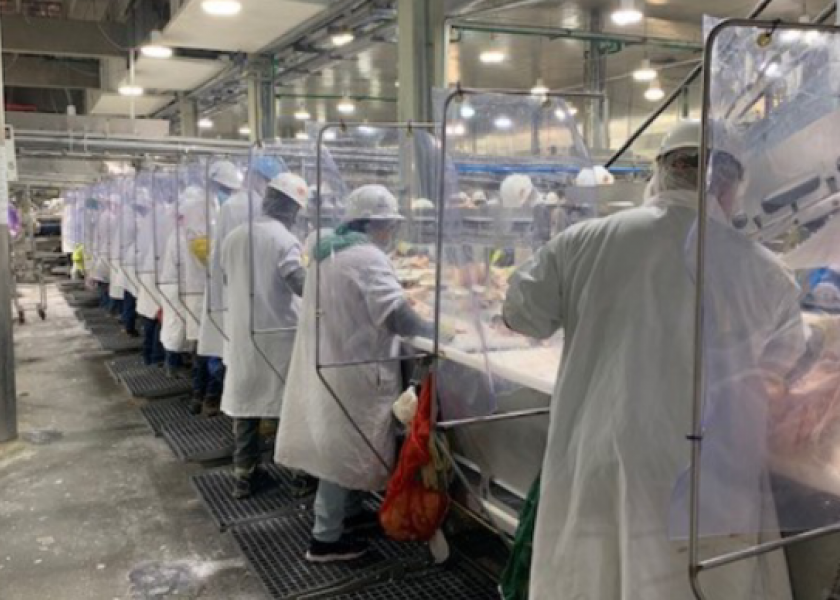Meat Processing Plants: What Factors are Critical for Survival?

Meat processing plants in the U.S. have garnered considerable public attention in recent years, often focusing on production and labor issues. The COVID-19 pandemic underscored the vulnerability of large, concentrated plants, as major shutdowns led to reduced output and higher meat prices for consumers.
Policy makers have launched initiatives at the state and federal levels to increase meat processing capacity and industry resilience, often favoring small and medium-sized plants. But little research exists to determine what factors make plants more likely to succeed. A new study from the University of Illinois Urbana-Champaign looks at meat processing plants across the United States, aiming to identify characteristics associated with plant survival and provide crucial information for legislators.
“Even before the pandemic, there was a lot of focus on concentration in meat processing. When the pandemic hit, plants with thousands of workers shut down due to COVID outbreaks. Meat processing capacity was reduced by about 40% at the height of the lockdowns, and ongoing efforts to break up plants were intensified,” says Sarah Low, professor and head of the Department of Agricultural and Consumer Economics, part of the College of Agricultural, Consumer and Environmental Sciences at Illinois. Low is co-author on the study, published in the Journal of the Agricultural and Applied Economics Association.
“Our goal was to understand what factors are associated with plant survival, so we could better inform policymakers who want to invest in these plants,” Low adds.
The researchers analyzed data from 1997 to 2020 for U.S. non-poultry meat processors with more than five employees (poultry was excluded due to a unique industry structure). The analysis included 7,839 plants, focusing on plant-level characteristics, local context and concentration.
The study showed the majority of meat processing plants are located in the Eastern half of the U.S., although small and medium plants are more dispersed throughout the states. Many plants are clustered around major cities in proximity to large customer bases and available workforce — in fact, 86% of plants are located in metro or metro-adjacent counties.
The researchers found the average plant survived 9.7 years and 62% of the plants failed at some point during the study period, with small and medium plants more likely to fail than large plants.
“We did find a difference in factors associated with survival for the small and medium plants, compared to the large plants, as well as for urban versus rural plants. For small plants, survival was closely related to business diversification. If they added a retail or wholesale meat market, they were more likely to survive,” explains Catherine Isley, senior business analyst at The Context Network and lead author on the study.
“For larger plants, we found that local context, including workforce-related variables, was more closely related to plant survival. We didn’t find much evidence for the impact of concentration, except for large non-metro plants, where concentration was related to increased survival. This finding suggests that policies aiming to support small and medium meat processors by breaking up larger processors might negatively impact output and industry capacity,” she stated.
If plants are spread out across the country, then workers would have to be spread out as well, Low noted. “There are locations in Nebraska or Kansas, where whole communities are set up to serve immigrant workers. If you want to break up these big processors and have plants in small towns, who's going to work there? We currently have a shortage of labor nationwide, and many plants rely on an immigrant workforce,” she said.
Policy initiatives for large plants need to address labor availability issues and support the labor force effectively, Low and Isley point out. This could include, for example, increasing the number of visas for immigrant workers, training new workers, improving working conditions and investing in research and development to automate processes.
For small and medium plants, there is a different set of policy implications.
“To allocate federal or state dollars in the most efficient way, it would make sense to support plants that are diversified and more likely to survive,” Isley says. “But on the flip side, the goal might be to support plants that are more likely to fail, because otherwise those local communities wouldn't have a plant. However, this approach would only work in areas where the market can support value-added niche products. There’s not necessarily a one-size-fits-all solution for small plants.”
The researchers also found that small plants managed by women in rural areas are less likely to survive. Thus, an additional target for investments could be technical assistance for very small women-operated plants in rural areas, including entrepreneurial training and ecosystem building. Low suggests leveraging the expertise of Cooperative Extension Services, such as Illinois Extension, which are uniquely positioned to provide support and resources for small businesses in local areas.
The article, “Meat processing plant survival: The role of plant and regional characteristics,” is published in the Journal of the Agricultural and Applied Economics Association [doi.org/10.1002/jaa2.55]. Authors are Catherine Isley and Sarah Low.
This research was supported in part by USDA OCE cooperative agreement #58-0111-21-009, “State and Regional Farm Financial Analysis” and by the Missouri Ag. Experiment Station and University of Missouri Extension.







